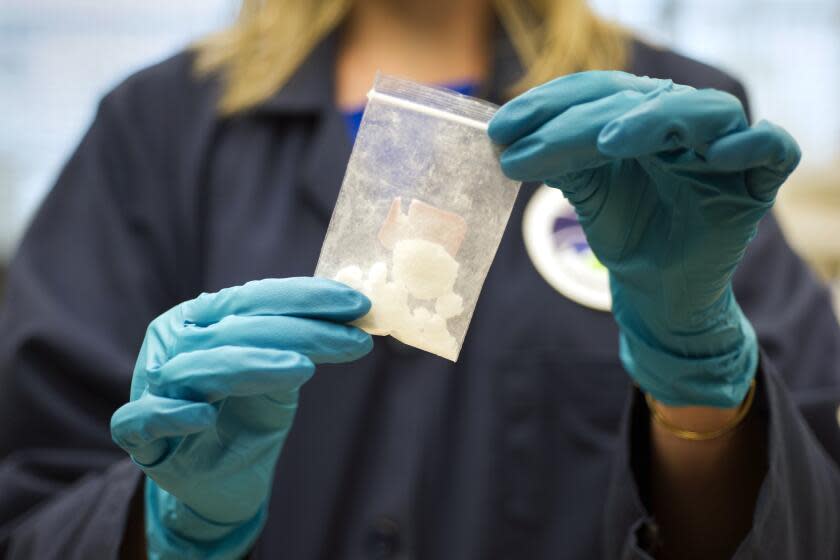Opinion: Many Americans believe migrants bring fentanyl across the border. That's wrong and dangerous

- Oops!Something went wrong.Please try again later.
Two unrelated facts combined with a lie form a powerful and dangerous piece of misinformation that is spreading virally.
The facts are that a drug overdose epidemic is killing more than 100,000 Americans a year and that far more migrants are crossing the country’s southern border than ever before. The lie is that the migrants are bringing fentanyl, the highly addictive opioid behind most lethal overdoses.
Most illicit fentanyl is indeed made abroad and smuggled over the southern border. But it’s largely transported by U.S. citizens, not migrants.
Read more: Opinion: 'Just say no' can kill kids. Teach them how to stay safe in the fentanyl era
About 90% of the fentanyl seized at the border in recent years was at legal crossings, which undocumented migrants generally avoid, and 91% of the seizures were from U.S. citizens, according to Border Patrol data. It’s much easier to transport fentanyl pills or powder in one of the thousands of vehicles that pass through legal ports of entry every day than with the bedraggled people walking, wading and climbing across the border.
Former President Trump and other politicians and pundits have nevertheless been relentlessly linking migrants with fentanyl on the campaign trail, in Congress and on social media. A Trump campaign ad warned of “record numbers streaming across our border, costing taxpayers billions, and almost as many Americans killed from fentanyl as killed in World War II.” It showed images of crowds walking along a roadside and a Fox News headline reading, “Border Patrol seized enough fentanyl to kill entire U.S.”
Read more: Editorial: Haven't we learned yet? Harsher penalties won't save us from fentanyl
This is a classic example of what we call dangerous speech: language that inspires fear and violence by describing another group of people as an existential threat. And it’s working to terrible effect: Americans are increasingly convinced that migrants are to blame for the fentanyl crisis. Social media posts blaming migrants for the drug’s toll more than tripled from December to January, according to our analysis of more than 30 sites.
Along with other dangerous speech casting migrants as terrorists and invaders, the fentanyl lie is fueling calls for states to send National Guard troops to the border — even from places that are far from the border, such as Florida. That is raising the risk of violent confrontations with migrants as well as federal Border Patrol agents.
It is especially hard to refute this kind of misinformation, which draws not only on partial truths but also on genuine fear and grief. Fear is a visceral emotion that provokes strong biological responses from the human body, so most dangerous speech invokes a mortal threat of some kind.
Fear of disease, for example, can be as communicable as the microbes that cause it. Early in the COVID-19 pandemic, fear led people to believe dangerous disinformation, including Trump’s recommendation to take the antimalarial medicine chloroquine to protect themselves against the contagion. One recently published study attributed about 17,000 deaths across the United States and other countries to the use of hydroxychloroquine early in the pandemic.
The combination of truth, lies and fear has proved fatal before. During the Ebola epidemic of 2018-20, for example, it was clear that the disease was lethal and that many Congolese people distrusted their government. When those facts were stitched together with the false rumor that medical workers were spreading Ebola instead of trying to prevent people from dying from it, the workers were attacked. The misinformation inspired nearly 500 acts of violence and at least 25 deaths.
It's vital for influential people to refute the fentanyl lie, which creates similar risks of violence against a particular group, in this case migrants. Moreover, such dangerous disinformation distracts attention and resources from effective responses to a deadly epidemic.
Susan Benesch is the executive director of the Dangerous Speech Project, where Catherine Buerger is the director of research.
This story originally appeared in Los Angeles Times.

